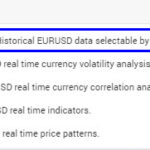The euro is the official currency of the Eurozone, used daily by millions across Europe and recognized globally. Understanding the different denominations of euro banknotes is essential for anyone traveling to or doing business within the Eurozone. This guide will walk you through the current series of euro banknotes, detailing what denominations are available and key features of each.
Currently, there are two series of euro banknotes in circulation: the first series and the “Europa” series. Both series are legal tender, meaning they can be used for all transactions within the Eurozone. Let’s explore the denominations available in each series.
The “Europa” Series: Modern Euro Banknotes
The “Europa” series is the second and current series of euro banknotes, designed with enhanced security features and a refreshed look. This series includes six denominations, ranging from €5 to €200.
€5 Euro Banknote
The €5 banknote is the smallest denomination in the Europa series and is colored grey. It represents the Classical architectural period.
Color: Grey
Size: 120 x 62 mm
Architectural Period: Classical
€10 Euro Banknote
The €10 banknote is red in color and showcases the Romanesque architectural period.
Color: Red
Size: 127 x 67 mm
Architectural Period: Romanesque
€20 Euro Banknote
The blue €20 banknote represents the Gothic architectural period.
Color: Blue
Size: 133 x 72 mm
Architectural Period: Gothic
€50 Euro Banknote
The €50 banknote is orange and depicts the Renaissance architectural period.
Color: Orange
Size: 140 x 77 mm
Architectural Period: Renaissance
€100 Euro Banknote
The €100 banknote is green, representing the Baroque and Rococo architectural styles.
Color: Green
Size: 147 x 77 mm
Architectural Period: Baroque and Rococo
€200 Euro Banknote
The €200 banknote is yellow and represents Iron and glass architecture.
Color: Yellow
Size: 153 x 77 mm
Architectural Period: Iron and glass architecture
The First Series: Still Legal Tender
The first series of euro banknotes was the original set issued when the euro was introduced. While gradually being replaced by the Europa series, these banknotes remain legal tender. The first series initially included seven denominations.
Denominations of the First Series
The first series includes denominations of €5, €10, €20, €50, €100, €200, and €500. Let’s look at each one:
€5 Euro Banknote (First Series)
Color: Grey
Size: 120 x 62 mm
Architectural Period: Classical
€10 Euro Banknote (First Series)
Color: Red
Size: 127 x 67 mm
Architectural Period: Romanesque
€20 Euro Banknote (First Series)
Color: Blue
Size: 133 x 72 mm
Architectural Period: Gothic
€50 Euro Banknote (First Series)
Color: Orange
Size: 140 x 77 mm
Architectural Period: Renaissance
€100 Euro Banknote (First Series)
Color: Green
Size: 147 x 82 mm
Architectural Period: Baroque and rococo
€200 Euro Banknote (First Series)
Color: Yellow
Size: 153 x 82 mm
Architectural Period: Iron and glass architecture
€500 Euro Banknote (First Series) – Discontinued
The €500 banknote, while part of the first series and still legal tender, is no longer issued since 2019. This denomination is purple and represents modern 20th-century architecture.
Color: Purple
Size: 160 x 82 mm
Architectural Period: Modern 20th century architecture
Legal Tender and Future Banknotes
It’s important to remember that all banknotes from both the first and Europa series remain legal tender throughout the Eurozone. Even though the €500 banknote is no longer being issued, existing notes are still valid for transactions and store of value.
Looking ahead, the Eurosystem is actively working on designing a new series of euro banknotes. Public input is playing a crucial role in this process, with themes like “European culture” and “Rivers and birds” being considered for the future designs. The final decision on designs and the timing of the new banknotes is expected in 2026, promising an evolution in the look of the euro in the years to come.
Understanding “What Denominations Do Euros Come In” is more than just knowing the different values; it’s about recognizing the currency that facilitates commerce and daily life across a major economic region. Whether you’re a traveler, a business person, or simply curious, knowing the euro banknotes is a valuable piece of knowledge.

